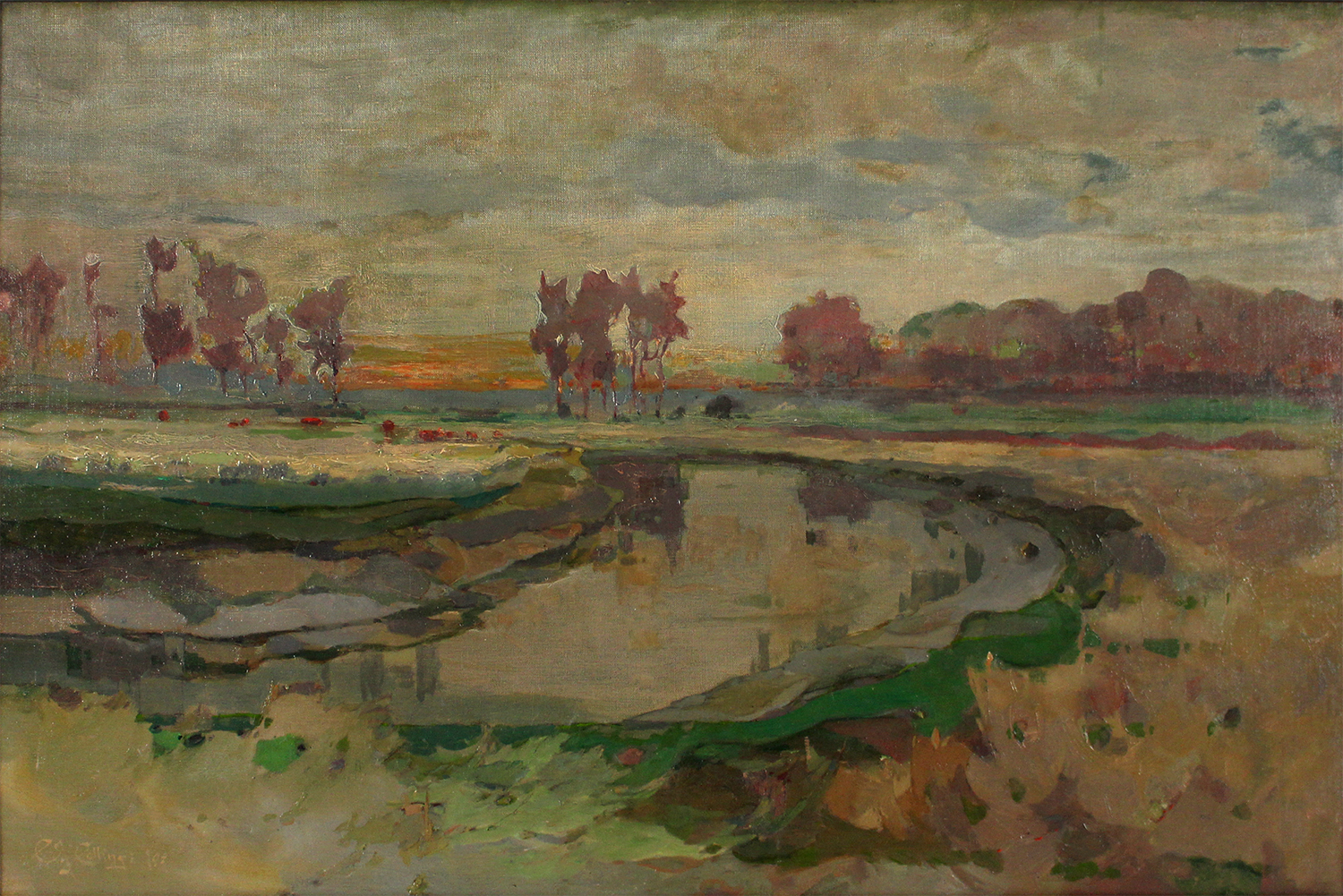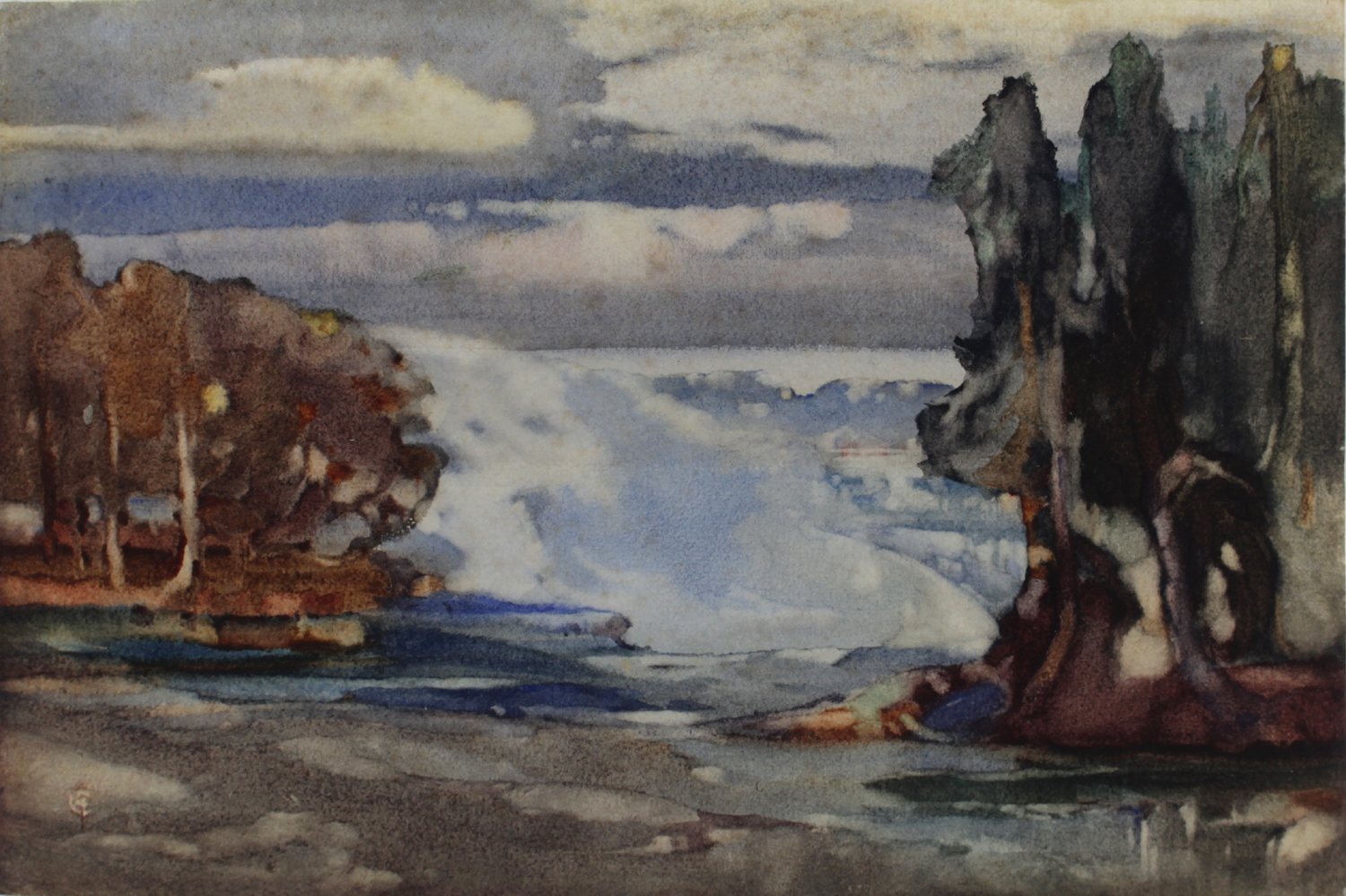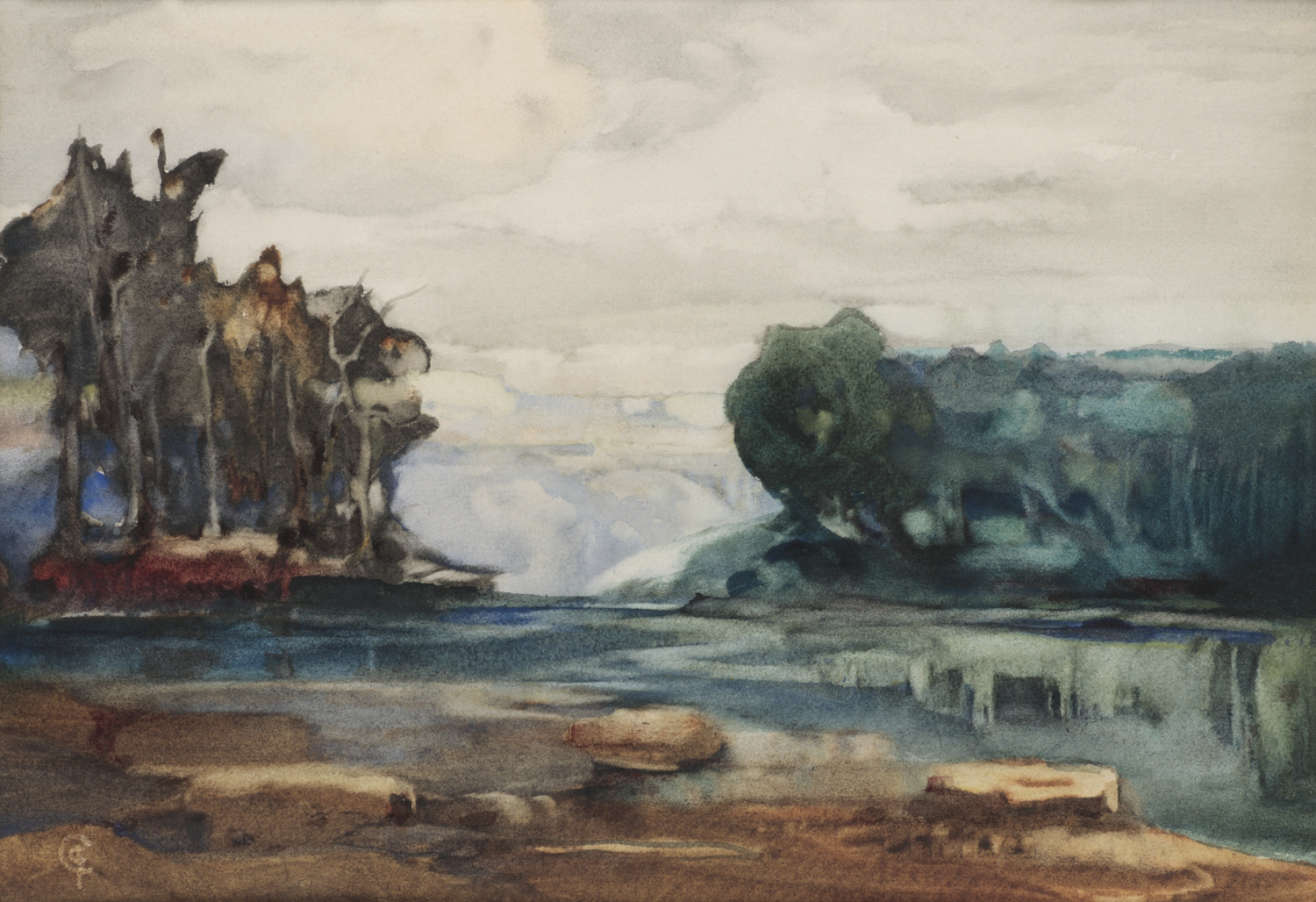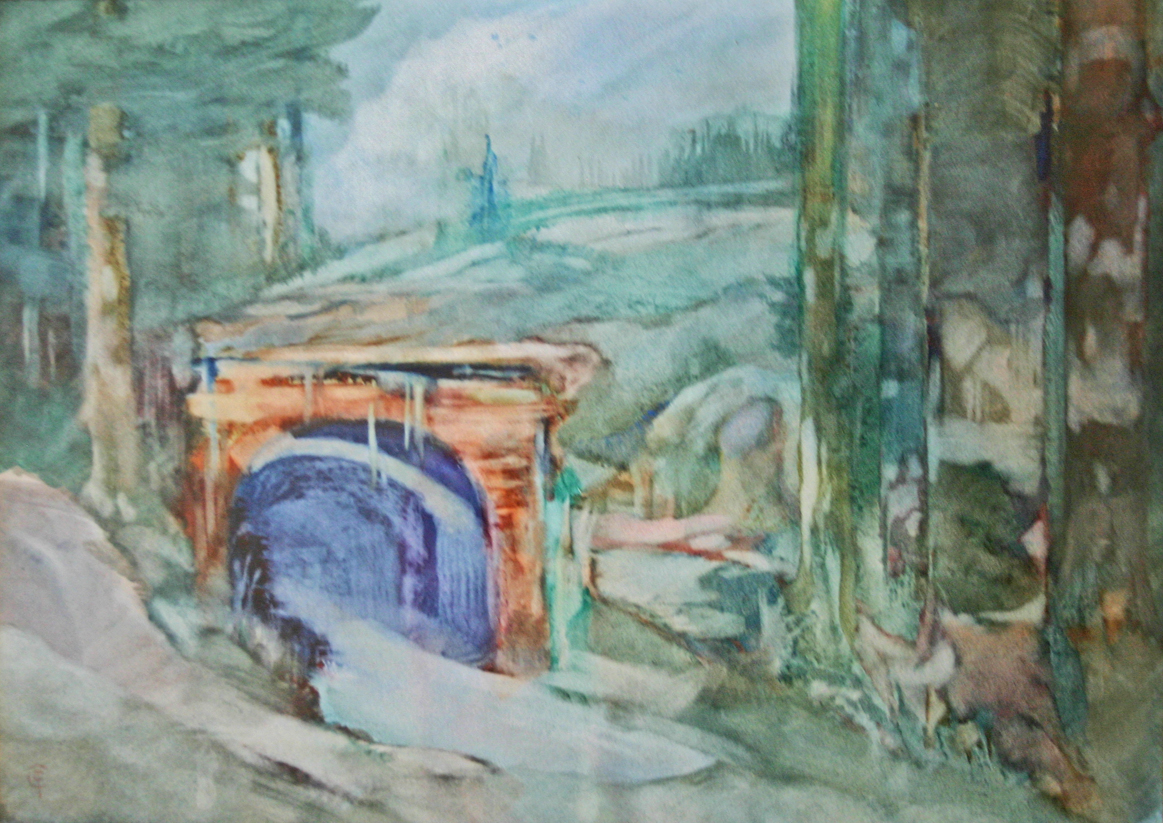SOLD WORKS
Charles John Collings was born in Chudleigh, Devon in 1848. His desire to be an architect was never fulfilled and the majority of his working life was spent in a solicitor’s office.
Collings started painting at the age of fourteen, but it was not until his mid-forties that he began producing work seriously. He exhibited at the British Royal Academy for the first time in 1893, and continued to contribute there and to the International Society of Sculptors, Painters, and Engravers for several years. Although mostly self-taught, Collings received some formal training from the watercolour artist Nathaniel H.J. Baird in 1895. Collings began to teach in 1897 and held several one-man shows.
At the age of sixty-two, Collings was looking for a change of scenery and immigrated to Canada in 1910 with his wife and two sons. They settled on the remote Seymour Arm of Shuswap Lake where the family built an English Tudor country house. It was here that Collings found his true and lasting inspiration for his artwork. He perfected his technique using paper soaked in water then mixing the colours directly on the paper. Collings sketched “en plein air” but created the finished works in his studio; thus giving his imagination free reign. Because of his pioneer life and solitude in the mountains, Collings wasn’t influenced by the artistic trends of the day and was therefore free to develop his unique perception of nature and to capture its vastness and grand intensity. It has been said that his style is a blending of Turner and the Japanese watercolourist Hiroshige. There is no doubt that Collings was influenced by the Japanese technique, as he owned a fine collection of oriental paintings and woodcuts.
Collings was visited in 1910 by the English dealer Luscombe Carroll who put together four shows of his Canadian works, the first in 1912 titled “The Canadian Rockies”. Although Collings’ work was popular in both Canada and England, the artist chose to have little contact with the British Columbia art community and rarely exhibited with the Vancouver and Victoria art societies. The sale of his paintings was usually handled by the Carroll Gallery in London, although other exhibitions were held in Montreal, Chicago, and New York. In the East and in England his work was very popular and his 1912 exhibition was critically acclaimed. Yet in Western Canada Collings was relatively unknown and was labelled “The Recluse of the Rockies”.
In 1920, Collings and his family went to England but soon came back to Shuswap and the English home they had forged out of the Canadian wilds, which still stands today. Collings continued to paint and travel throughout Western Canada and made trips to Nipigon and Niagara. Always an ardent climber, he hiked the Rockies and the Selkirks actively until his death at the age of 83. Throughout his life and in his work, Collings demonstrated a love of nature and an incredible ability to express its grandeur.
This below is the last paragraph of the last page of booklet Charles J. Collings and the Art of Painting by Victor Reinaecker (Sometime Assistant Keeper of the Art Department Ashmolean Museum Oxford)
“There is often a lapse of time before the discoveries of some particular artist are absorbed and understood by the general public. Every innovator adds to the aesthetic language of his time: he enriches it spiritually. It may well be that Collings has made certain significant formal and spiritual discoveries in the field of pictorial art. His paintings have a remarkable coherence and consistency: they reflect certain traits peculiar to the English outlook; but, at the same time, they are an advance upon the characteristically English tradition. Collings’s sensitive awareness of Nature, of the transforming power of light: his concern for the spiritual relationships which exist between man and Nature; his sense of topography, but also his special preoccupation with the problem of pictorial design – all these have enabled him to transcend Nature’s most familiar aspects and give to them a new significance. Future generations will know and recognize more easily the extent and degree of his accomplishment; but, at this moment, we can at least pay appropriate tribute to this high imaginative powers, his consistent artistic integrity, and his single-minded devotion to the highest personal and aesthetic ideals.”











